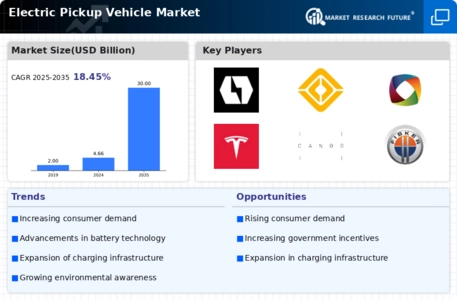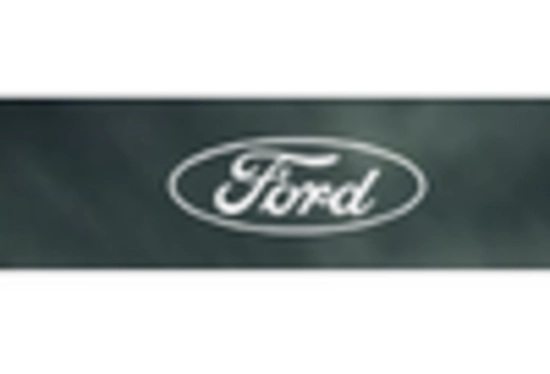Advancements in Battery Technology
The Electric Pickup Vehicle Market is poised for growth due to advancements in battery technology, which are crucial for enhancing the performance and range of electric pickups. Recent innovations in lithium-ion batteries have led to increased energy density and reduced charging times, making electric pickups more appealing to consumers. For example, the development of solid-state batteries may potentially double the range of electric vehicles, addressing one of the primary concerns of potential buyers. As battery costs continue to decline, the overall affordability of electric pickups is likely to improve, further driving market expansion. This technological progress is essential for manufacturers aiming to compete effectively in the electric vehicle landscape.
Expansion of Charging Infrastructure
The Electric Pickup Vehicle Market is being positively impacted by the expansion of charging infrastructure, which is essential for supporting the growing number of electric vehicles on the road. As more charging stations are installed in urban and rural areas, the convenience of owning an electric pickup increases, alleviating range anxiety among potential buyers. Recent reports indicate that the number of public charging stations has increased significantly, with projections suggesting a continued upward trend. This expansion not only facilitates easier access to charging but also encourages consumers to consider electric pickups as a practical alternative to traditional vehicles. The development of fast-charging networks may further enhance the attractiveness of electric pickups, making them a more viable option for consumers.
Government Regulations and Incentives
The Electric Pickup Vehicle Market is significantly influenced by government regulations and incentives designed to promote electric vehicle adoption. Many governments are implementing stringent emissions standards and offering tax credits or rebates for electric vehicle purchases. For instance, certain regions have established targets for reducing greenhouse gas emissions, which may compel consumers and manufacturers to transition towards electric pickups. Additionally, the introduction of low-emission zones in urban areas could further incentivize the use of electric vehicles. These regulatory frameworks not only encourage consumers to consider electric pickups but also stimulate manufacturers to innovate and expand their electric vehicle offerings, thereby enhancing market growth.
Rising Consumer Demand for Electric Vehicles
The Electric Pickup Vehicle Market is experiencing a notable surge in consumer demand, driven by an increasing awareness of environmental issues and a shift towards sustainable transportation. As consumers become more environmentally conscious, the preference for electric vehicles, including pickups, is likely to grow. Recent data indicates that electric vehicle sales have seen a year-on-year increase of over 30%, suggesting a robust market potential. This trend is further supported by government incentives aimed at promoting electric vehicle adoption, which may enhance consumer interest in electric pickups. The growing availability of electric pickup models from various manufacturers is also expected to cater to diverse consumer preferences, thereby expanding the market.
Shifting Consumer Preferences Towards Utility Vehicles
The Electric Pickup Vehicle Market is benefiting from a shift in consumer preferences towards utility vehicles, particularly in regions where pickups are traditionally popular. As consumers seek vehicles that combine functionality with sustainability, electric pickups are emerging as a viable option. Market data suggests that the demand for electric utility vehicles is expected to grow by over 25% in the next five years, indicating a strong trend towards electrification in this segment. This shift is likely influenced by the increasing availability of electric pickup models that offer comparable performance to their gasoline counterparts, thereby attracting a broader audience. Manufacturers are responding to this trend by developing electric pickups that cater to both work and recreational needs.


















Leave a Comment